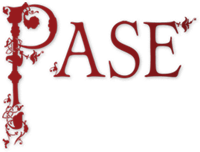Table of Contents
Top of page
Name
Summary
Distribution Map
Property List
Profile
Bibliography
Bottom of page
Leomær 7
Leomær the beadle, fl. 1066
Male
DWP
4 of 5
Summary
Leomær 7 was a beadle and thegn with two small estates in east Bedfordshire TRE. One of these he shared with another beadle and was assessed at 1½ hides and with a value of 20s TRE, the other he held in King Edward’s lordship and was assessed at 1 hide and with a value of 15s.Distribution map of property and lordships associated with this name in DB
List of property and lordships associated with this name in DB
Holder 1066
| Shire | Phil. ref. | Vill | DB Spelling | Holder 1066 | Lord 1066 | Tenant-in-Chief 1086 | 1086 Subtenant | Fiscal Value | 1066 Value | 1086 Value | Conf. | Show on Map |
|---|---|---|---|---|---|---|---|---|---|---|---|---|
| Bedfordshire | 25,12 | Stanford | Lemarus | Leomær the beadle | Edward, king | William Espec | Hugh de Beauchamp | 1.00 | 1.00 | 0.75 | D | Map |
| Bedfordshire | 57,3v | Holme | Lemarus | Leomær the beadle | - | Alwine the king's reeve | - | 0.75 | 0.50 | 0.50 | B | Map |
| Totals | ||||||||||||
Profile
Leomær 7 was a beadle who with Ælfric, also described as a beadle in DB, shared an estate of 1½ hides at Holme in east Bedfordshire. Records of beadles are unusual in DB and they probably had a more general official role, perhaps as deputies of royal reeves, than the petty constables and manorial overseers who were their namesakes later in the medieval period (Lennard 1959: 276-7). That two beadles shared the estate at Holme suggests that they held it in return for their official roles, but two features of the DB record may weigh against this. Firstly, DB notes that Leomær and Ælfric ‘could sell’, which implies they had the power of alienation over their land; and, secondly, Holme was among six lands that ‘Ralph Taillebois assigned to the king’s service when he was sheriff, for they did not belong there TRE’. Nevertheless, it remains likely that Leomær 7 was an official, either in local government or in the management of an estate, and perhaps in royal service.This official and perhaps royal role for Leomær 7 suggests that he was also the Leomær, thegn of King Edward (Edward 15), who TRE held a hide at Stanford, less than 2½ miles from Holme and also in the Ivel valley. The identification remains uncertain, not only because Holme and Stanford passed to different successors after the Conquest but also because there was a cluster of estates in east Bedfordshire and north Hertfordshire held TRE by people called Leomær or Leodmær (viz. Leomær 9, Leodmær 6 and Leodmær 8). However, all of these had different TRE lords and the one holding the estate closest to Holme or Stanford, Leodmær 8, was still the holder in 1086. On balance, it is more likely than not that Holme and Stanford were held by one person, Leomær 7, rather than by two and that Leomær 7 was distinct from any other local landholder with that or a similar name.
Bibliography
Lenard 1959: R. Lennard, Rural England 1086-1135 (Oxford, 1959)
